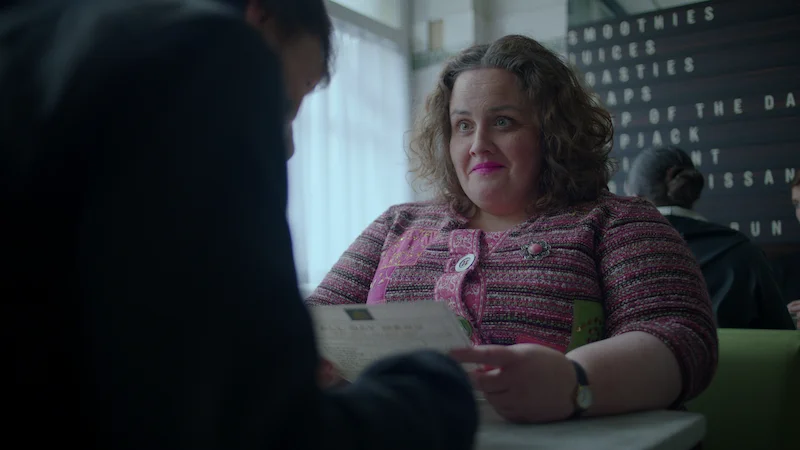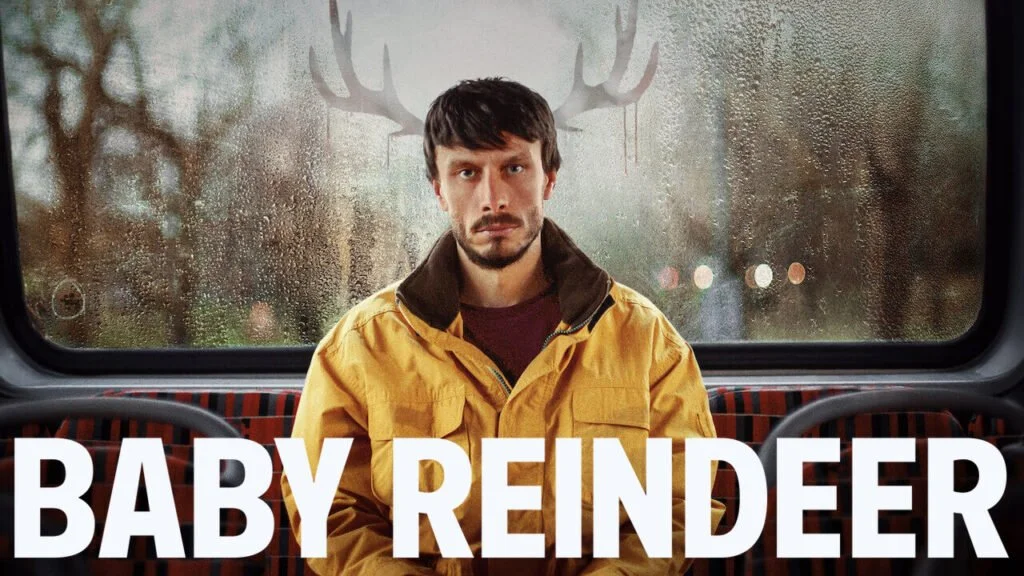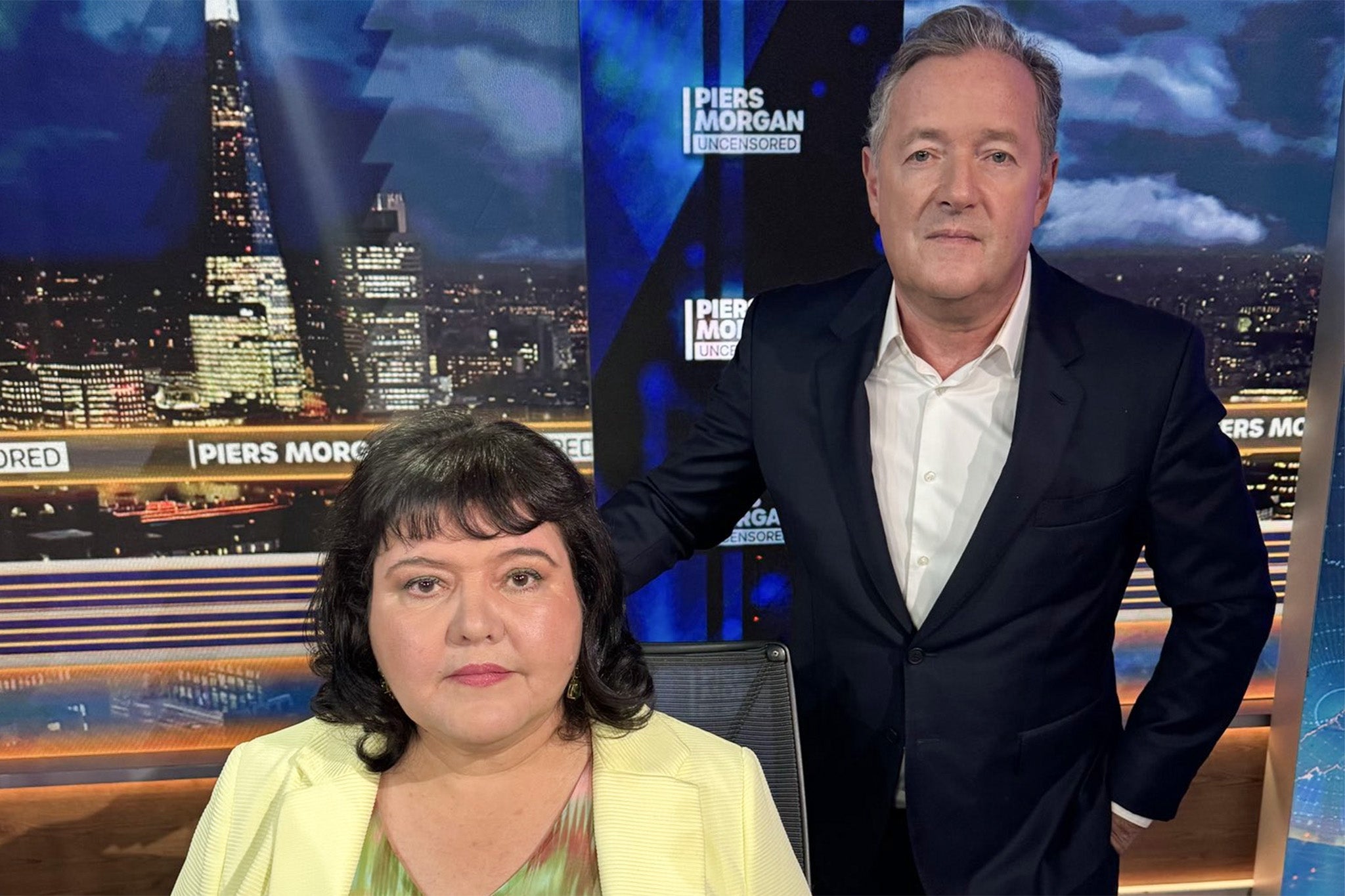Baby Reindeer aired on Netflix on 11th April 2024 and soon became a phenomenon. In just a month, it entered the race to become one of the most-watched Netflix series and has garnered critical appreciation. The series is one of the few psychological dark comedy pieces that has defied the idea of a niche audience. It resonated with one and all and that is what makes it a masterpiece.
The series is one of the few psychological dark comedy pieces that has defied the idea of a niche audience.
The seven-episode series unveiled a dark side of human affection. The stalking, the confused acts of kindness, the compulsive self-harm, and the inability to protect oneself shocked the audience and taunted the realism that many boast of but few follow.
The uneasy series sparked an instant debate that social media quickly instigated. The comments on the content soon turned attention towards the real identity of Martha and the rapist depicted in the series. Social media sleuths took only a few minutes to discover Fiona Harvey, the real stalker as portrayed by Richard Gadd in Baby Reindeer.
Fiona Harvey, the real-life Martha
The emails and Tweets spelt out in Baby Reindeer began a race in Internet sleuths to cross-match it with Gadd’s Twitter (now X) account and identify the real-life stalker, Martha. In just a few minutes, they discovered Fiona Harvey, and what followed was a flood of insults, death threats, and worse.
Fiona who claims to have not watched the series yet was startled and caught off-guard after she received so many threats. She appears very similar to the character Martha and their accents are identical. From the hairstyle to the specific Scottish accent, Gadd has carefully constructed a caricature of Harvey as Martha.
From the hairstyle to the specific Scottish accent, Gadd has carefully constructed a caricature of Harvey as Martha.
Harvey decided to come out and share her side of the story after she was vehemently criticised for the actions, she claims she hasn’t even committed. She maintains her innocence and alleges that most of the narrative in Baby Reindeer is constructed and false as seen on the famous show.
How truthful is the truth?
Baby Reindeer begins with the disclaimer, ‘It is a true story.’ It claims to be true, not inspired by the truth, but the truth. It is this claim that has garnered so much interest in the audience. Richard Gadd playing the lead gives the series an autobiographical element and forces the audience to question who the stalker is.
Cinema is constructed to lead the audience to believe it is an artifice. The milieu, plot, music, and actors give even true stories a mix of masala. films like M.S. Dhoni: The Untold Story, 83, and Main Atal Hoon announce the stories and lead characters even before the audience views them, but they still maintain a sense of artistic freedom. The reality is diluted with some enigma of the magical.
The drawback with true stories on OTT platforms is that they are too personal. The voyeuristic pleasure derived from these heightens every time the series claims it is true.
Richard Gadd goes above and beyond in Baby Reindeer and re-constructs places, characters, and dialogues.
Richard Gadd goes above and beyond in Baby Reindeer and re-constructs places, characters, and dialogues. It is like walking down a crime scene with him where he is the victim. The story is depicted from his point of view and everything or everyone else is just a caricature in his narrative.
Martha is a mentally unstable woman capable of serial stalking. She compels us to feel sorry for her but at the same time stuns us with her determination. The hours of waiting and the incredible delusions are just a window into her psyche.
Baby Reindeer: constructing a villain
Netflix pursued Gadd to make this series after his one-man show with the same name became a hit in the UK. The show was from his perspective and the series is his brainchild. He has the mic and his pen writes the script of this series. He is the victim, and he has chosen his villain.
When Netflix chose to work with Gadd on this project, they knew who the villain was. The narrative of Baby Reindeer had already been set even before the writing began. When a massive network is determined to portray a side of a story, it almost always gets mixed up.
Baby Reindeer is a story that needed to be told, but it needed not to malign the image of everyone involved.
Baby Reindeer and Netflix’s duty of care
In an interview with Fiona Harvey, Piers Morgan repeatedly questioned Netflix’s duty of care. He pinned the responsibility of exposing Harvey’s identity on the network. Social Media found her out on the basis of her tweets and Morgan questioned why the network did not change the language of the tweets still available on Gadd’s account.
There were three major characters in the series, the stalker, the trans woman, and the rapist. Amongst these, the stalker has been identified and threatened while the other two remain unknown. The onus is on the network. When they knew enough to conceal the identities of the other characters, why couldn’t they extend the same courtesy to Harvey? Or did they want her to be exposed?
Some people believe it is a collaborative stunt pulled by Gadd and Harvey, others think she has been victimised.
Harvey calls Gadd ‘psychotic’
In the interview with Morgan, Fiona Harvey calls Richard Gadd ‘a psychotic.’ She claims that he chronically lies to garner the thrill and trust of the audience. She goes on to say that Gadd and Jessica Gunning’s film promotion was rather vulgar. She even comments about his mental state and questions if the depiction of rape scenes were even true or just constructed by his unstable mind.
Morgan confronted Harvey with the infamous claims that she wrote 41,000 emails, 744 Tweets, 48 FB messages, 106 letters, and sent 350 voice messages to him. While Netflix shows most of these and the creators claim to have all these in the record, Harvey outrightly refused to have sent them. She agrees that such a number is outrageous and anyone who would have sent so many messages and emails would have been obsessed with Gadd.
When pressed, Harvey accepts that she is open to legal disclosure and that all digital proofs could be referenced and cross-checked.
Who is lying?
Richard Gadd’s truth has been spoken in Baby Reindeer and has been publicised, and the people believed him. Fiona Harvey disagrees and negates all crucial aspects shown in the series. She refuses to have attended Gadd’s comedy show or have gone to his home. She refuses to have ever contacted his parents or gone to jail (as shown in the last episode of the series).
Harvey confesses that she visited the London pub Holy Arms quite often (where Gadd used to work as a bartender) but refuses that she was offered a free cup of tea.
Harvey confesses that she visited the London pub Holy Arms quite often (where Gadd used to work as a bartender) but refuses that she was offered a free cup of tea. She reiterates that nothing is free and this negates the great act of sympathy that Gadd repeatedly blames for his association with Harvey.
Gadd does seem to be very confident about the messages and Netflix is sure to have some physical proof before making the tall claim of reality. While Piers Morgan repeatedly kept referring to Gadd’s drug abuse and questioning his state of mind, it seemed more of an escape.
Harvey distances herself from Gadd and calls him obsessed with her, but also agrees to the mention of the ‘hang the curtains’ reference. The sexual innuendo in the banter is apparent in the series and Harvey explains how it was all very casual and Scottish. She explains that the phrase has been used multiple times online and it was a harmless joke never meant to become bigger than a pun.
Throughout the interview, Harvey seemed confident of her stance but towards the end, she staggered. She shifted from her claim of never sending Gadd a message to accepting the exchange of a couple of messages. She vaguely remembers a few emails etc.
When confronted with the news of stalking an MP’s wife, she narrated and explained but confessed that there was indeed a case. When pressed by Morgan, she seems to forget which email she used to write to Gadd as she had 6 different email addresses at the time and four phones. When asked if she was ever in love with Gadd she emphatically says Yes and then a No follows. She goes on to say that Gadd wanted to sleep with her at some point.
Her narrative seems paradoxical, while she initially maintains that Gadd is homosexual, she concludes by saying he wanted to sleep with her. She initially refuses to have sent a single email but then remembers there might have been a few.
The entire interview was opportunistic, where the act that Morgan and Harvey put was rehearsed. It did not unveil a truth but mocked reality. Morgan even goes to the length of saying that the series was an act to garner an audience because ‘Stalking is in vogue.’ The conversation is hot even now where millions of viewers are flocking to hundreds of YouTube channels discussing the authenticity of Baby Reindeer.
Baby Reindeer became a phenomenon not because it was true, but because the truth it depicted was secretly tucked away in our society. The truth of aspiring artists getting raped, the confusion of identity, and the trauma of drug abuse are almost never shown with vulnerability in the famous Netflix series. But is it the truth?
The aftermath of Baby Reindeer opens a pandora’s box of distorted realities and personality disorders. Was Netflix wrong in exposing the real-life Martha? Was the exposé intentional? Is any reality the reality on OTT platforms? Is the aftermath of online violence and hatred towards Fiona Harvey a result of the inability to stand for what’s right in real life? Has online rebellion become too convenient?
Is the aftermath of online violence and hatred towards Fiona Harvey a result of the inability to stand for what’s right in real life? Has online rebellion become too convenient?
The phenomenon of Baby Reindeer has exposed many nuances of writing and artistic freedom, and it must be discussed and not made into a circus of agitated lawyers and vengeful viewers.
About the author(s)
Dr. Guni Vats is an Assistant Professor at the Department of English, Manav Rachna International Institute of Research and Studies. A PhD in Gender Studies, she is a renowned researcher, writer, and scholar.











